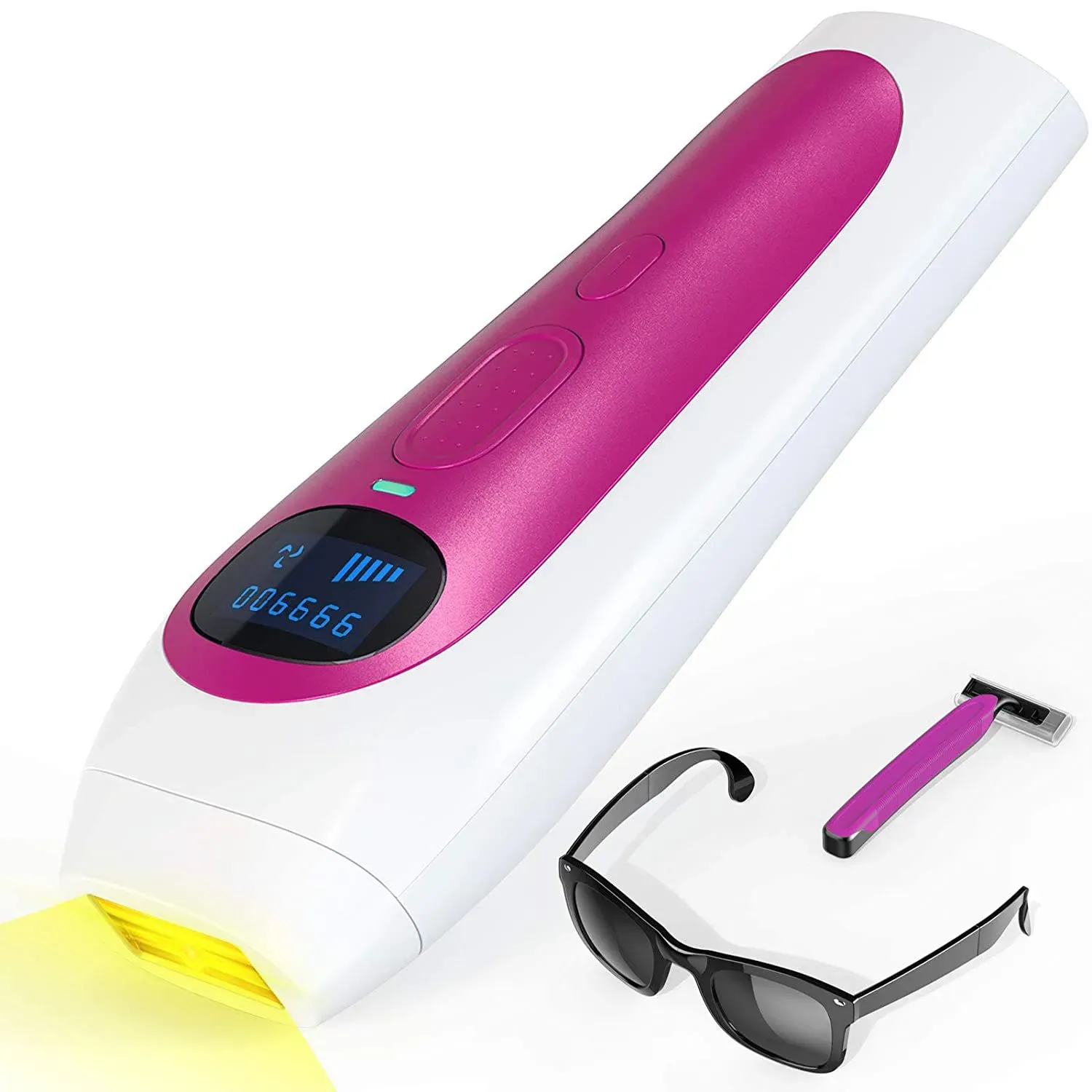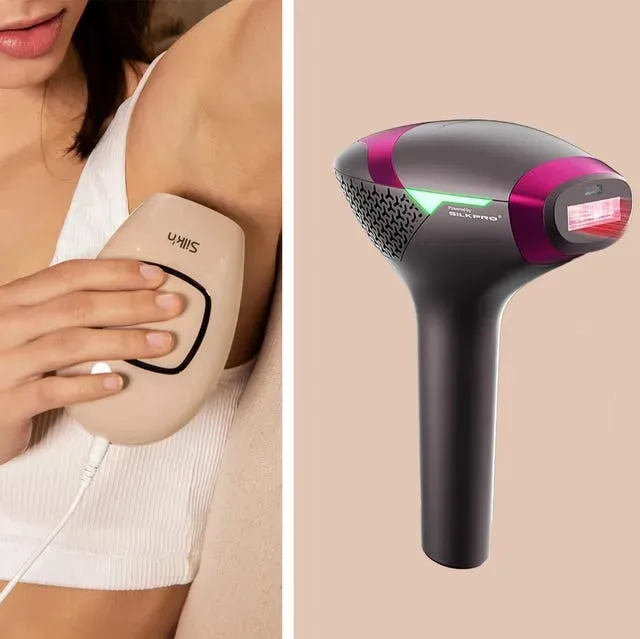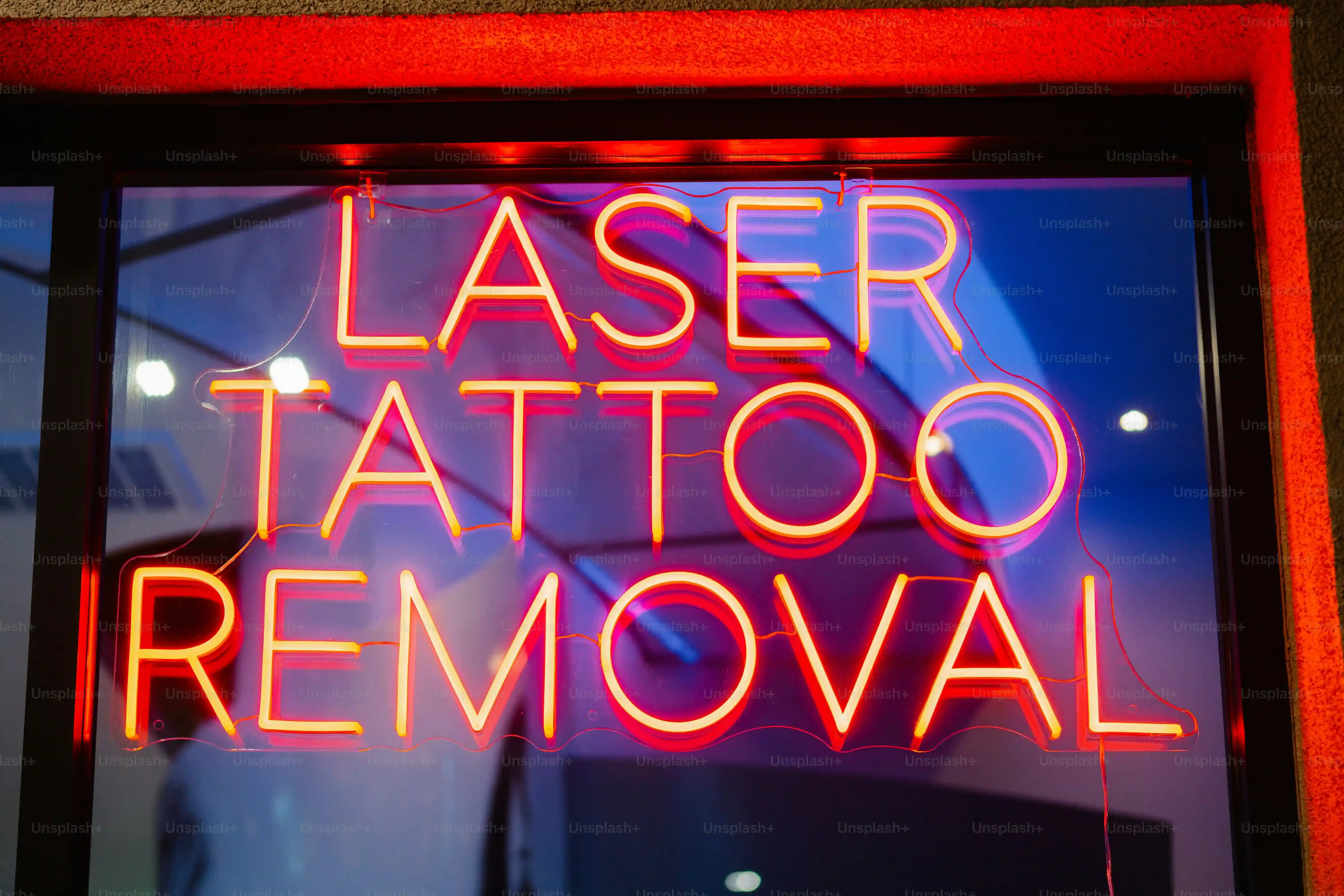Table of Contents
Tired of the endless cycle of shaving stubble or enduring painful waxing sessions? Let's be real, managing unwanted hair takes time, effort, and often leaves your skin less than thrilled. You might have eyed those devices promising a more permanent fix from the comfort of your own couch. The idea of ditching the razor for good sounds pretty appealing, right? But wading through the options to find the genuinely effective ones can feel like a whole other chore. That's where finding the best laser hair removal at home comes in. It's not just about buying a gadget; it's about investing in a solution that actually delivers results without requiring a second mortgage or weekly trips to a clinic.
What Exactly is AtHome Laser Hair Removal?

What Exactly is AtHome Laser Hair Removal?
It's Not Your Dermatologist's Big Gun
let's clear the air right off the bat. When we talk about the best laser hair removal at home, we're usually talking about something a bit different than what you'd get at a fancy clinic. Those places often use powerful, medical-grade lasers that pack a serious punch. The devices you buy for home use? Not quite the same beast. Most consumer devices actually use IPL, or Intense Pulsed Light, which is a broader spectrum of light compared to a single laser wavelength. Think of clinic lasers as a sniper rifle targeting specific hair follicles, while IPL is more like a shotgun blast covering a wider area. It's designed to be safer and less intense for unsupervised use, which is why you can buy it online without needing a medical degree.
How These Light Zappers Work
So, how do these gadgets actually get rid of hair? Whether it's true laser or IPL, the basic principle is similar: they use light energy to target the pigment (melanin) in your hair. The dark pigment absorbs the light, which then converts to heat. This heat travels down the hair shaft and damages the hair follicle, ideally preventing or slowing down future hair growth. Because the light targets pigment, these devices work best on dark hair against light skin – the bigger the contrast, the more effectively the light is absorbed by the hair and not the surrounding skin. This is a crucial point often missed when people jump in.
Feature | At-Home IPL/Laser | Professional Laser |
|---|---|---|
Technology | Usually IPL (Broad Spectrum Light) | True Laser (Single Wavelength) |
Power Level | Lower | Higher |
Cost | Lower Upfront | Higher Overall |
Treatment Area | Often Smaller/Targeted | Can Cover Large Areas Quickly |
Skin Tone Range | Limited (Best on Fair-Medium) | Wider Range (Some Lasers for Darker Skin) |
Results | Significant Reduction Over Time | More Significant/Long-Term Reduction |
Setting Realistic Expectations
Now, about those silky-smooth legs you're dreaming of. While the best laser hair removal at home devices can absolutely lead to a significant reduction in hair growth, it's rarely a one-and-done deal, or even total, permanent removal for everyone. Hair grows in cycles, and the light treatment is only effective on hairs currently in the active growth phase. This is why you need multiple sessions spaced out over several weeks or months to catch hairs in different cycles. Expect a gradual thinning and slowing of growth, rather than instant baldness. Consistency is key here; skipping sessions is like trying to bake a cake without turning on the oven. It just won't work.
How to Pick the Best Laser Hair Removal at Home Device

How to Pick the Best Laser Hair Removal at Home Device
Know Your Skin and Hair Type First
Alright, so you're sold on the idea of at-home hair reduction. Great! But before you just grab the first sleek-looking gadget you see online, pump the brakes. Choosing the best laser hair removal at home device isn't a one-size-fits-all situation. The absolute most critical factor is your skin tone and hair color. Remember how these devices target pigment? If you have very dark skin, the light can target the pigment in your skin as much as your hair, which is a recipe for burns, discoloration, or scarring. Most at-home devices are designed for light to medium skin tones with dark hair. If you have blonde, red, gray, or white hair, there's often not enough pigment for the light to target effectively, meaning these devices likely won't work well, if at all. Seriously, check the compatibility charts provided by the manufacturer. Skipping this step is like buying shoes without knowing your size – you're just setting yourself up for discomfort and disappointment.
Features That Actually Matter
assuming your skin and hair are compatible, what else should you look for in the best laser hair removal at home device? Don't get distracted by fancy colors or marketing jargon about "pain-free" treatments (some discomfort is normal, though manageable). Pay attention to the number of flashes the device offers. This is essentially its lifespan; more flashes mean more treatments before it becomes a paperweight. Look for devices with adjustable intensity levels. This lets you start lower to see how your skin reacts and gradually increase the power if needed for better results. A skin tone sensor is also a smart feature; it prevents the device from flashing if your skin is too dark for safe treatment. Consider the size of the treatment window – a larger window covers more area faster, which is a blessing when you're tackling legs, but a smaller one is better for precision work on the face or bikini line. Think about where you plan to use it most.
When you're comparing devices, keep these points front and center:
- Skin Tone Compatibility: Is it safe for your specific skin color? Check the chart!
- Hair Color: Does it work on your hair pigment (dark works best)?
- Flash Count: How many treatments will you get out of it?
- Intensity Levels: Can you adjust the power for comfort and effectiveness?
- Treatment Window Size: Is it right for the areas you want to treat?
- Safety Features: Does it have a skin tone sensor or contact sensor?
Reviews: TopRated Best Laser Hair Removal at Home Options

Reviews: TopRated Best Laser Hair Removal at Home Options
Sorting Through the Hype for the Best
the market is flooded with devices all claiming to be the answer to your hairy woes. Everyone wants to know which is the absolute best laser hair removal at home device out there. The truth? It really depends on your specific needs, skin type, and budget. What works wonders for your friend might do nothing for you, or worse, cause irritation. Reviews are a decent starting point, but you need to read them critically. Look for patterns – do multiple users with similar skin tones report good results? Are there consistent complaints about battery life or pain levels? Don't just look at the star rating; dive into the actual comments. A device with fewer reviews but consistently positive feedback from people like you might be a better bet than a wildly popular one with mixed results.
What Users Say About Performance
When people rave about a device, they usually mention a few key things: visible reduction in hair growth after a specific number of sessions (usually 4-8 weeks), ease of use, and manageable discomfort. The top-rated devices often feature automatic skin tone detection, which takes some of the guesswork out of treatment and adds a layer of safety. Users appreciate when a device feels sturdy and well-built, not like it's going to fall apart after a few uses. Fast flash rates are also a plus, cutting down the time needed for larger areas like legs. Nobody wants to spend an hour zapping each limb. Look for mentions of results on tricky areas like the bikini line or underarms – if a device performs well there, it's usually a good sign.
- Key Features Praised in Reviews:
- Noticeable hair reduction within 2 months
- Automatic skin tone safety sensors
- Comfortable ergonomic design
- Multiple intensity settings
- Reliable performance over many flashes
Finding Reliable Information
Navigating the sheer volume of products claiming to be the best laser hair removal at home can be overwhelming. Beyond user reviews on retail sites, look for reviews from dermatologists or reputable beauty bloggers who have actually tested the devices over time. These sources often provide more technical details and insights into effectiveness and safety protocols. Some websites, like hairawaybylaser.com, compile information and reviews that can help you compare different models side-by-side, focusing on the features that truly impact performance and safety. Remember, no device is magic; consistency and suitability for your skin/hair type are non-negotiable for seeing real results.
Safety and Getting Real Results with Your AtHome Device

Safety and Getting Real Results with Your AtHome Device
Don't Skip the Patch Test, Seriously
you've unboxed your shiny new gadget, maybe one of the contenders for the best laser hair removal at home. Exciting, right? Hold your horses before you start zapping your entire leg. Every single instruction manual for these devices says to do a patch test first. And guess what? They say it for a reason. Your skin isn't a universal canvas. What works fine on your arm might react differently on your bikini line. A patch test in a small, inconspicuous area lets you see how your skin handles the light energy before you commit to a larger area. Ignoring this step is like taste-testing a questionable dish by taking a huge bite – you might regret it. Look for excessive redness, swelling, blistering, or significant pain within 24-48 hours. A little pinkness is normal, but anything more intense? Stop and maybe lower the intensity or reconsider if the device is right for you. Side effects aren't just theoretical; they happen to real people who get a bit too eager.
Consistency is King (and Queen) for Results
Buying the device is just step one. Actually *using* it consistently is where the magic (or at least, the hair reduction) happens. Remember those hair growth cycles we talked about? You need to hit the follicles when they're actively growing. This usually means treatments every 1-2 weeks initially, then spacing them out as hair growth slows. Think of it less like a sprint and more like a marathon. Zapping sporadically won't get you anywhere fast. It requires dedication. Set reminders. Make it part of your routine, like brushing your teeth or scrolling TikTok. If you treat for a few weeks, get bored, and stop, don't complain the device didn't work. It’s not the device; it's the user. Getting the best laser hair removal at home results is about commitment over convenience.
To Maximize Your At-Home Results:
- Always shave the area just before treatment. The device targets pigment in the hair shaft, not on the skin surface.
- Ensure your skin is clean, dry, and free of lotions or oils.
- Follow the recommended treatment schedule religiously.
- Use the appropriate intensity level for your skin and the body area (start low!).
- Avoid sun exposure on treated areas, or use a high SPF.
- Be patient! Results take weeks to months.
Knowing When to Call a Dermatologist
While many people find success with their best laser hair removal at home device, they aren't a substitute for professional medical advice, especially if you have underlying skin conditions, very sensitive skin, or are unsure about your skin tone suitability. If you experience persistent pain, significant skin reactions, or notice unusual changes in your skin after using the device, stop immediately and consult a dermatologist. These devices are designed for home use and generally have safety features, but complications can occur. Don't try to tough it out or self-diagnose with Dr. Google. A quick visit to a professional can save you a lot of trouble and potential skin damage down the line. They can also offer insights into whether your expectations are realistic or if professional treatment might be a better fit for your specific situation.
Wrapping Up Your At-Home Hair Removal Quest
So there you have it. Navigating the world of at-home hair removal devices isn't a simple "buy the first one you see" situation. Finding the best laser hair removal at home for you requires a bit of homework – understanding your skin tone, hair color, and what features actually matter. These devices aren't magic wands, and results take time and consistency. But for many, they offer a genuine alternative to the endless cycle of temporary fixes. Choose wisely, follow the instructions like they're gospel, and you might just find yourself spending less time battling stubble and more time doing... well, anything else.
